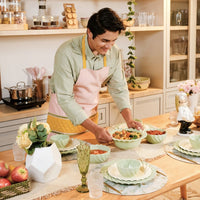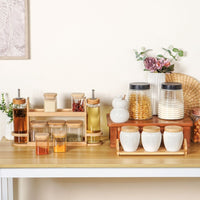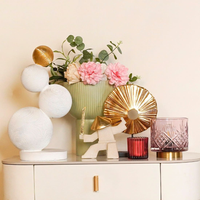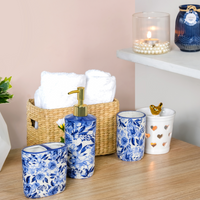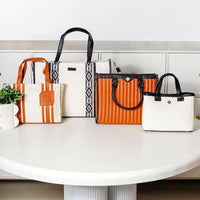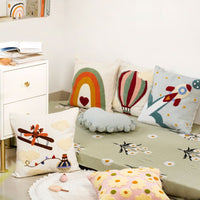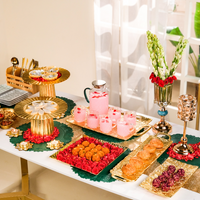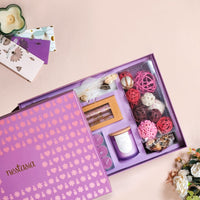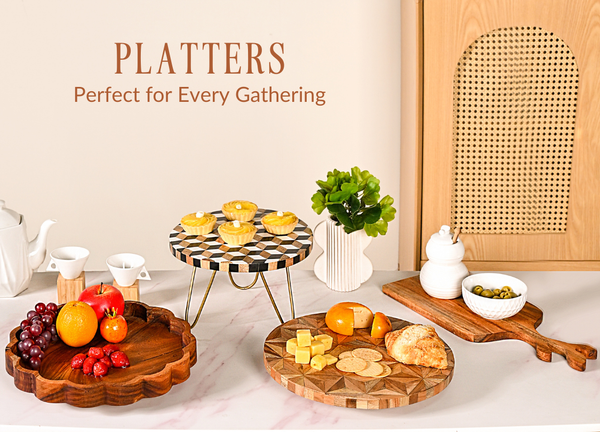When it comes to choosing the right kind of cookware, we can often be dumbfounded by the enormous variety of cookware. However, there are two main types of cookware - cast iron and ceramic.
No matter how much the Gordon Ramsay in us wants to buy every piece of cookware for our pretty little kitchen just because it looks aesthetically pleasing, it's important to consider your needs and preferences. If you want something that will last a lifetime, cast iron is a great choice. However, if you're looking for something that's easier to clean and maintain, ceramic cookware is a better option. Whichever type of cookware you choose, be sure to invest in a good quality set that will last for years to come. If you want to revive traditional Indian recipes with the flavours and aromas of earthenware, then clay pots are your perfect choice. Not only are they a safer cookware option, but they also lend a rustic, aesthetically pleasing look to your kitchen.
We are here to share with you the types of cookware that might suit your kitchen best based on many different factors. Stick with us till the end to get an insight into the ultimate cookware guide!
Different types of cookware
There are numerous types of cookware that are available in the market, each one very tempting not to be bought. If you are someone who loves organizing and decorating their kitchen and home, then you surely know what we are talking about. Below, we have mentioned the types of cookware that are going to be your guide to buying the right one for you.
1. Stainless steel: Classic stainless steel is a very versatile cookware material. It is suitable for both amateur and professional cooks because of its durability, superior ability to brown meats, and oven-proof capabilities. You can easily use it for searing, browning, frying, sautéing, and much more. It’s the ultimate all-purpose cookware because there are no ingredients or cooking techniques that it can’t handle.

2. Cast Iron: If there's one type of cookware in a kitchen that can do just about anything, it's cast iron. Cast iron pans heat and cook evenly and stand up to the nicks, dents, and scratches one might typically find with other types of pans. You can shop for the ultimate Cast Iron cookware, pans, and pots from our collection of cookware. They are something to add to your daily use in the kitchen.
3. Glass: Glass cookware and bakeware are considered safe, as there are no toxins that might seep into your food. The glass is often blended with a small amount of ceramic (also safe) to improve its performance. Harbouring a wide collection of glass bakeware, Nestasia makes for the one-stop destination for your kitchen needs.

4. Ceramic: Ceramic cookware usually means pots made of clay. These are specially glazed and kiln-baked. Some ceramic pots have aluminium or some other metal base and are often coated with ceramic enamel. Significant growth in its usage has been noticed in the past few years.
5. Aluminium: Aluminum cookware is usually non-anodized and, as a result, requires an additional nonstick texture for the interior for easy cleaning. This cookware is generally lightweight and an outstanding heat conductor, but it often requires proper cleaning and can get stained easily. The food cooked in aluminium cookware might get oxidized if you don’t clean it well or if you overheat the pan often.

6. Copper: Great for skillets and saucepans, copper is more expensive than every other option, but for good reason. Since copper has the best conductivity of all the conventional cooking materials, it is the very best choice for anyone who makes nuanced dishes with delicate fats and sugars that require the most accurate heat control.

7. Nonstick: A great nonstick pan will make your life easier in the kitchen, whether you're a professional or a beginner. They're typically lighter than stainless steel and cast iron, can be used with less oil, and are overall easier to clean. They're great for cooking eggs and other delicate foods that are prone to sticking, like pancakes and pan-seared fish.

8. Clay: Cookware made of clay is widely considered to be a much more sustainable and healthier cooking option. Not only do they cook food slowly and evenly, releasing moisture and nutrients, but they can also reduce the amount of oil or grease. Since clay pots are heat resistant, the food retains its moisture.

Factors to keep in mind for perfect cookware
Value for money: The price range of one’s choice depends on their budget, lifestyle, and healthcare choices. For instance, a household with a healthy kitchen would regularly replace its expired cookware. Another way could be to bring in relatively high-priced, reliable cookware for the long haul.
Durability: Good cookware is a long-term investment. Make a smart choice that stays with you for a long time. 3-ply clad Stainless steel is known for its longevity. Many brands offer a variety of 3-ply stainless steel products that can be useful for a wide range of needs.
Aesthetics: The choice of colours, designs, prints, and feel of cookware is something that almost every consumer would look for before purchasing. For instance, if there is a choice to select a colour or design for the same product, it just increases the options you have. If someone likes to buy their utensils after seeing and holding them, they might have fewer choices when compared with online buyers. The simple reason behind the same is the availability of many options at the tip of one’s finger.
Quality of the product: High-quality cookware is vital for good health. The factors that assure the quality of an ideal utensil may include good heat conductivity, durability, ease of use, and maintenance while retaining food nutrients. A holistic quality assessment also includes aesthetics, cookware brands, and, of course, the price.
Conclusion
Conscious cookware is as important as conscious cooking. To buy a cookware that meets all your cooking requirements is the one to buy. No matter how satisfying it might be to fill your kitchen with various kinds of cookware and other essentials, it ultimately boils down to choosing the ones that will be used on a regular basis for everyday needs.
FAQs
What should you make sure of when buying cookware?
Great cookware should be durable, have good heat conductivity, be easy to use and maintain, not react with food and alter its flavor, and be sturdy.
How do I choose healthy cookware?
Safer cookware options include ceramic, cast iron, carbon steel, stainless steel, glass, and titanium. Each has its own particular benefits. Ceramic cookware and bakeware are beautiful. They are excellent at conducting heat and can withstand extremely high temperatures. Cast iron pans have been around for centuries. They are inexpensive, made without toxic chemicals, and, when well-seasoned, are naturally non-stick. Glass cookware and bakeware are considered safe, as there are no toxins to leach into your food.
What type of cookware is better?
The least toxic cookware is non-stick pans and pots, like cast iron, stainless steel, ceramic, glass, and enamel-coated cast iron. These options don't have any Teflon coating on them, making them safe to use.
What factors are most important to consider when selecting cookware?
There are a lot of factors to consider when choosing the right kind of cookware for yourself. The primary factors to consider are your budget or cost of the cookware, the quality of the product, and the material of the cookware.
What type of cookware is safest?
The least toxic cookware options are non-stick pans and pots, like cast iron, stainless steel, ceramic, glass, and enamel-coated cast iron.
What is the best cookware for safety?
As a safe alternative, stainless steel, ceramic, glass, and cast-iron pots and pans are the go-to materials to avoid risky ingredients seeping into your food.

